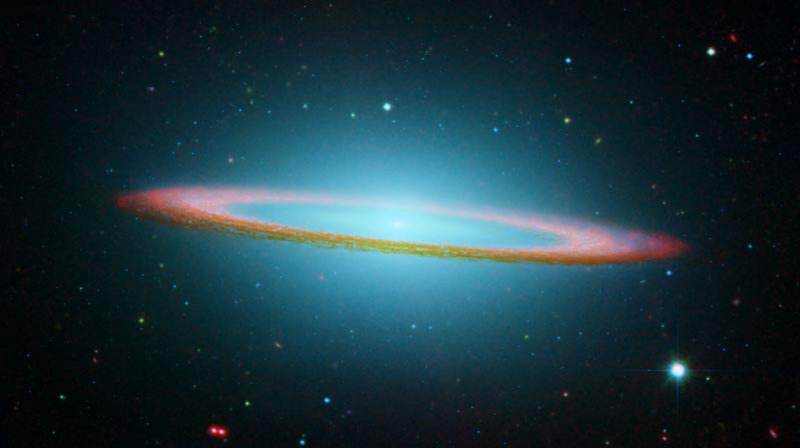Some thoughtful folks may be wondering: Even if scientists find an explanation for the origin of life from nonliving matter, they haven’t explained where the inanimate matter came from. Our universe has a lot of it. Who created all that?
“If there are 500 million Earth-like planets, where did any of them come from? Something cannot come from absolute nothing without the concept of a Divine Designer,” one person wrote to me, as a science writer and columnist. Others reminded me of the principle of conservation of energy: “What happened to the First Law of Thermodynamics? I believe there is a Creator. It takes much more faith to believe something came from truly nothing.”
Another suggested that believing in an eternal universe is no different from believing in God: “Neither is provable and both defy physical law as we know it. Am I missing something?”
Yes, said physicist Lawrence Krauss of Arizona State University, you really can get something from nothing and stay within the bounds of physical law.
“There are lots of ways for nothing to produce something,” said Krauss, who wrote “The Physics of Star Trek.” Nothing can even give rise to a whole lot of something, as he described in “A Universe From Nothing.”
First, you have to clearly define nothing, since it isn’t an official scientific term. Scientists talk about empty space as well as a state in which space and time themselves don’t exist. Either type of nothing can spontaneously produce stuff.
Empty space, as it turns out, can’t be perfectly empty. Every type of matter has an equal and opposite counterpart, and pairs of particles and their anti-particles can spontaneously emerge from empty space and then disappear again.
One consequence of quantum mechanics’ uncertainty principle is that a vacuum cannot remain perfectly empty forever. Not only will particles pop in and out of existence without violating the laws of physics, they have to.
How to get a whole universe to burst out of nothing is harder to explain. Scientists have multiple lines of evidence showing that our universe is expanding out of a so-called big bang. There’s still disagreement on the details, but the big bang theory made specific predictions about the proportions of hydrogen, helium and lithium in the universe, which we can measure, and the presence of radiation known as the cosmic microwave background, which is also measurable.
It’s not a matter of faith.
The currently favored version of the big bang theory posits that everything we see for light-years around came into being out of nothing. The theory is called inflation, which holds that in the first split-second after the start of the universe, space itself grew from a speck into an expansive and full universe.
It sounds like an outrageous violation of the law of conservation of energy, but it’s not, said Krauss, because of the ways matter and energy can both emerge as equal and opposite counterparts that can add up to zero — that is, nothing.
Matter and energy can convert into one another through the equation E=mc2. Physics allows energy to come from nothing, said Krauss, in forms that are both positive and negative. As long as equal amounts are created at once, energy can burst from nothing without violating conservation laws.
What does negative energy look like? According to Einstein’s general relativity, said Krauss, a gravitational field can hold negative energy.
The notion of negative energy allows our universe to spring into existence from a speck. As the universe expands and cools, positive energy condenses out as particles of matter, some of which become stars and planets.
Krauss said sometimes people accuse physicists of making up negative energy and other seemingly creative accounting practices because they don’t like the notion of a creator God. But these ideas come straight out of modern physics — quantum mechanics and relativity — and both have been thoroughly tested.
The concept of a whole universe arising from nothing is hard to imagine, but inflation predicts things people can measure — the way stars and galaxies are distributed in the cosmos as well as the particular pattern of the microwaves that pervade space as leftovers from the big bang.
Still, a few cosmologists back other theories. Physicist Paul Steinhardt, now at Princeton, works on an alternative “cyclic theory.”
In “cyclic theory” the big bang wasn’t the beginning, Steinhardt said, but part of a cycle of bangs. Matter is converted to energy and back to matter in a cyclical fashion that’s perfectly square with the laws of physics. Inflation is considered more mainstream, but he said both versions of the big bang are consistent with the laws of physics.
Send questions/comments to the editors.



Success. Please wait for the page to reload. If the page does not reload within 5 seconds, please refresh the page.
Enter your email and password to access comments.
Hi, to comment on stories you must . This profile is in addition to your subscription and website login.
Already have a commenting profile? .
Invalid username/password.
Please check your email to confirm and complete your registration.
Only subscribers are eligible to post comments. Please subscribe or login first for digital access. Here’s why.
Use the form below to reset your password. When you've submitted your account email, we will send an email with a reset code.